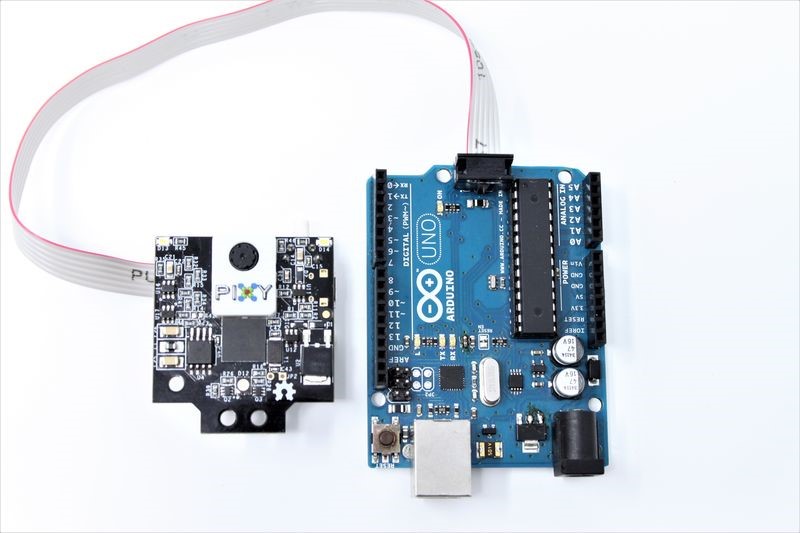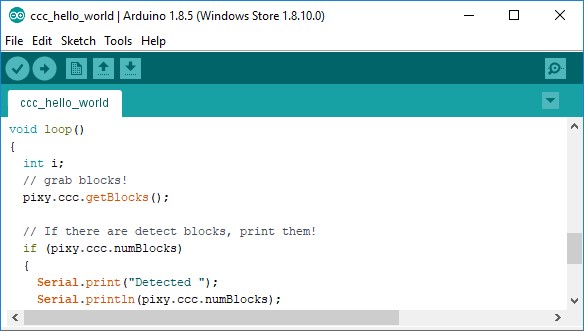We have 4 units in our Sydney Warehouse available for immediate dispatch.
We can get a further 120 units into Australia from DFRobot. If you order today, we can dispatch this stock between Jan 04, 2026 - Jan 21, 2026.
Pixy2 is smaller, faster and more capable than the original Pixy. Like its predecessor, Pixy2 can learn to detect objects that you teach it, just by pressing a button. Additionally, Pixy2 has new algorithms that detect and track lines for use with line-following robots. The new algorithms can detect intersections and “road signs” as well. The road signs can tell your robot what to do, such as turn left, turn right, slow down, etc. And Pixy2 does all of this at 60 frames-per-second, so your robot can be fast, too.
Connect directly to Arduino or Raspberry Pi

No need to futz around with tiny wires — Pixy2 comes with a special cable to plug directly into an Arduino and a USB cable to plug into a Raspberry Pi, so you can get started quickly. No Arduino or Raspberry Pi? No problem! Pixy2 has several interfaces (SPI, I2C, UART, and USB) and simple communications, so you get your chosen controller talking to Pixy2 in short order.
Simplify your programming

To get you up and running as fast as possible, we offer software libraries for Arduino and Raspberry Pi. Pixy2 makes your programs simpler by only sending the data you’re looking for. For example, if you teach Pixy2 a purple object, you will only receive data (X-Y coordinates, size, and unique ID) about the purple objects that Pixy2 detects.
FEATURES
- Pixy2 detects lines, intersections and small barcodes, intended for line-following robots
- Improved framerate – 60 frames-per-second
- Tracking algorithms have been added to color-based object detection
- Improved and simplified libraries for Arduino, Raspberry Pi and other controllers
- Integrated light source
SPECIFICATION
- Lens type: Standard M12
- Processor: NXP LPC4330, 204 MHz, dual core
- Image sensor: Aptina MT9M114, 1296×976 resolution with integrated image flow processor
- Lens field-of-view: 60 degrees horizontal, 40 degrees vertical
- Power consumption: 140 mA typical
- Power input: USB input (5V) or unregulated input (6V to 10V)
- RAM: 264K bytes
- Flash: 2M bytes
- Available data outputs: UART serial, SPI, I2C, USB, digital, analog
- Dimensions:1.5” x 1.65” x 0.6”
- Weight: 10 grams
- Integrated light source, approximately 20 lumens
DOCUMENTS
















